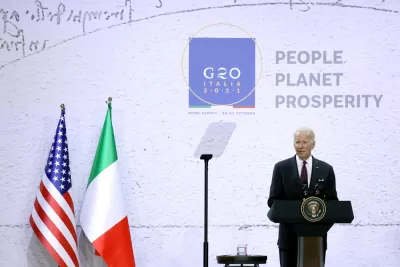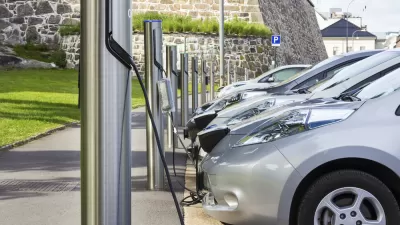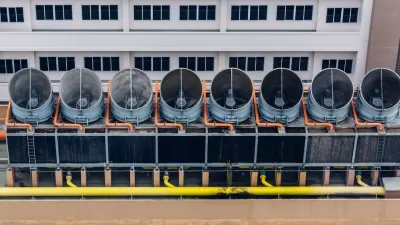President Biden signed an executive order on Wednesday that aims to cut 65 percent of the government's carbon emissions by the end of this decade and reach carbon neutrality by 2050.

An article by Anna Phillips for The Washington Post broke the news on Wednesday before President Biden signed the executive order, but details were already available. Biden aims to leverage the federal government's buying power to lower emissions, creating a fleet of electric vehicles, upgrading federal buildings, and changing the government's practices for buying electricity.
"Under the new approach, federal operations would run entirely on carbon-free electricity by 2030. By 2035, the government would stop buying gas-powered vehicles, switching to zero-emission heavy-duty trucks and cars. A decade after that, most of the buildings owned or leased by the government would no longer contribute to the carbon pollution that’s warming the planet," writes Phillips.
"The order also instructs the government to launch a 'buy clean' initiative, prioritizing products produced and transported with low greenhouse gas emissions."
According to experts cited in the article, the effort to lower emissions generated by the government could move the needle in the broader economy as well—because of the size and scope of the federal government's buying power.
The article also notes that the plan put forth in the executive order will face substantial obstacles, including production delays, opposition from industries and the other side of the political aisle, and the cost to upgrade facilities.
FULL STORY: Biden wants to make federal government carbon neutral by 2050

Alabama: Trump Terminates Settlements for Black Communities Harmed By Raw Sewage
Trump deemed the landmark civil rights agreement “illegal DEI and environmental justice policy.”

Study: Maui’s Plan to Convert Vacation Rentals to Long-Term Housing Could Cause Nearly $1 Billion Economic Loss
The plan would reduce visitor accommodation by 25% resulting in 1,900 jobs lost.

Planetizen Federal Action Tracker
A weekly monitor of how Trump’s orders and actions are impacting planners and planning in America.

Wind Energy on the Rise Despite Federal Policy Reversal
The Trump administration is revoking federal support for renewable energy, but demand for new projects continues unabated.

Passengers Flock to Caltrain After Electrification
The new electric trains are running faster and more reliably, leading to strong ridership growth on the Bay Area rail system.

Texas Churches Rally Behind ‘Yes in God’s Back Yard’ Legislation
Religious leaders want the state to reduce zoning regulations to streamline leasing church-owned land to housing developers.
Urban Design for Planners 1: Software Tools
This six-course series explores essential urban design concepts using open source software and equips planners with the tools they need to participate fully in the urban design process.
Planning for Universal Design
Learn the tools for implementing Universal Design in planning regulations.
Caltrans
Smith Gee Studio
Institute for Housing and Urban Development Studies (IHS)
City of Grandview
Harvard GSD Executive Education
Toledo-Lucas County Plan Commissions
Salt Lake City
NYU Wagner Graduate School of Public Service





























